About us
Mission Statement
Art is enthusiasm, and art is knowledge. The Kunstmuseum Wolfsburg wishes to share this knowledge. It strives to be a place of identification for the citizens of the city and the region and, of course, also wants to appeal to international visitors. It wants to take an artistic look at the world from the standpoint of Wolfsburg in order to contribute to an understanding of global events in all their complexity with the help of current art themes. The Kunstmuseum Wolfsburg wishes to inspire and to build bridges with art. With contemporary digital strategies, it strives to communicate its contents to the widest possible audience, arouse curiosity, and inspire enthusiasm for (inter)active encounters with art.
The Kunstmuseum Wolfsburg intends to further expand its significance with a scholarly and curatorially ambitious exhibition program. The central starting point is both the high-caliber collection and an independent program that focuses on contemporary art, but also takes positions of classical modernism into account in order to open up larger cultural contexts for the public.
As a place of cultural education for all, the Kunstmuseum Wolfsburg aims to be a meeting place for people from a wide variety of social backgrounds, with fascinating artistic positions and themes of global relevance. The Kunstmuseum Wolfsburg strives to be a place where visitors can feel at home at their own level of knowledge through differentiated offerings of information, where they can learn interesting facts about art, culture, and society and also make emotional experiences. At the same time, it also sees itself as a critical analyst and companion of global developments
The Kunstmuseum Wolfsburg strives to be an open, vital, and dynamic place of art and culture for everyone.
Sponsorship
The Kunstmuseum Wolfsburg is a privately-sponsored museum supported by the non-profit Kunststiftung Volkswagen. The project was able to get underway thanks to start-up funding provided by Volkswagen, the city of Wolfsburg and private donors. The subsequent building and the museum’s operation expenses are financed by the Kunststiftung Volkswagen. A large part of its funds come from the foundation of Asta and Christian Holler, the founders of Volkswagen-Versicherungsdienst VVD. In recent years the Kunstmuseum has also received project-based support from Volkswagen Financial Services AG.
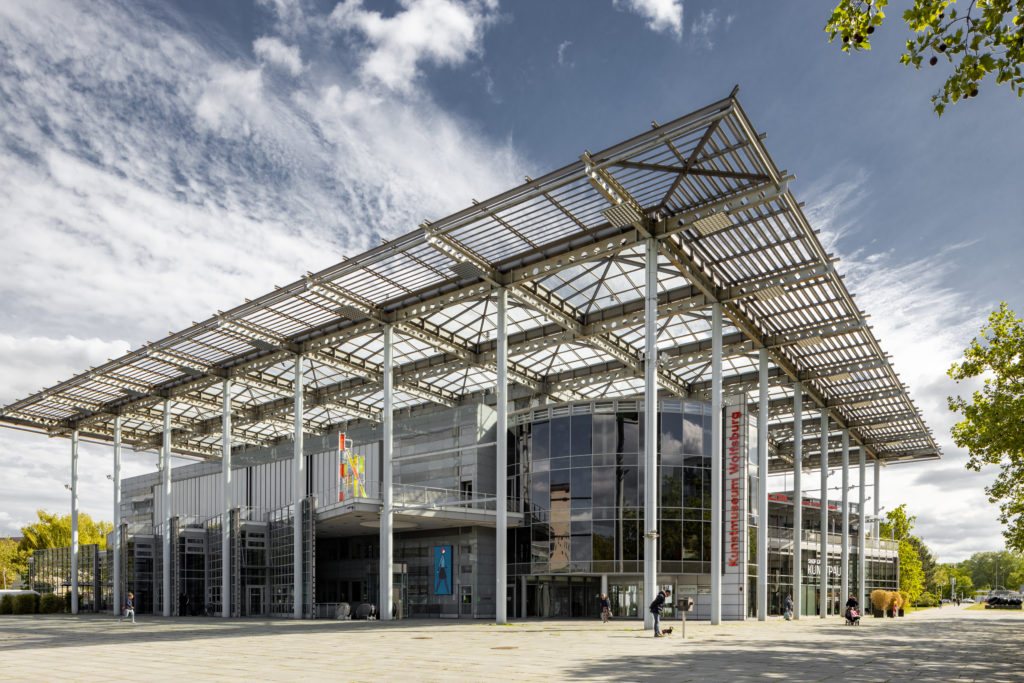
Photo: Marek Kruszewski
The Collection
The Kunstmuseum Wolfsburg has been collecting international contemporary art since 1994. A solid foundation was laid with key works from the field of Minimal Art, Conceptual Art and Arte Povera. Works by a younger generation of artists were subsequently added. It was never the intention to assemble a broad encyclopedic collection, focusing instead on prominent major works, ensembles and work phases in addition to the exemplary presentation of artistic developments. The result is not a documentation of so-called “currents” but concentrates instead on artists and artworks representing important aspects of contemporary art. The collection presently encompasses circa 1.000 works or ensembles.
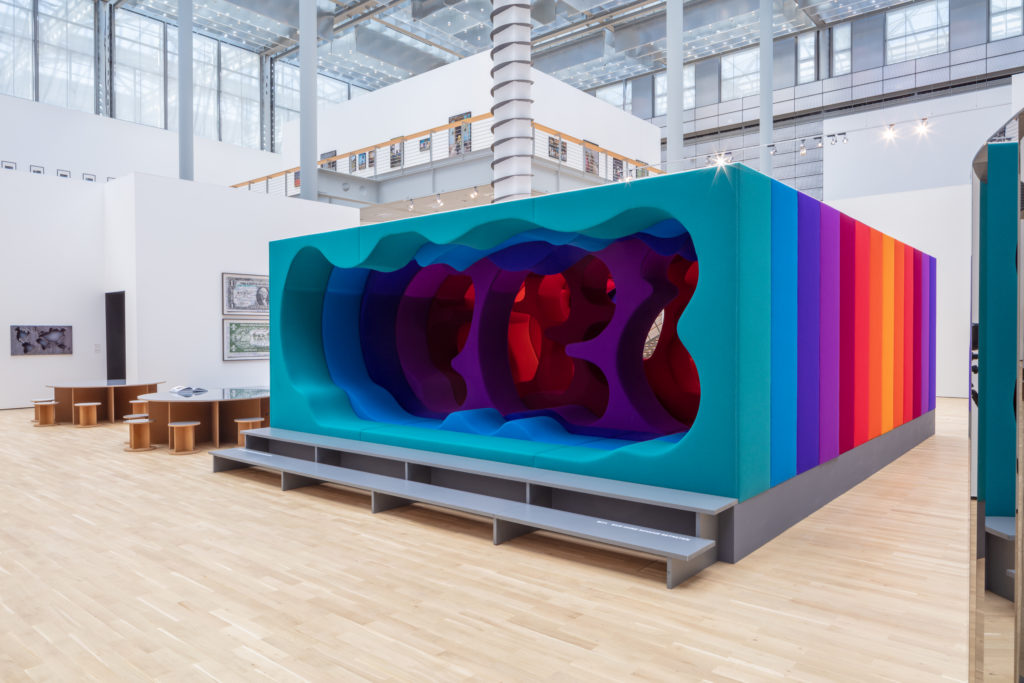
Photo: Marek Kruszewski
Artists Represented in the Collection (A Selection)
Franz Ackermann, Doug Aitken, Carl Andre, Nobuyoshi Araki, John M. Armleder, Katie Armstrong, Richard Artschwager, Awst & Walther, Caroline Bachmann & Stefan Banz, Christian Boltanski, Stanley Brouwn, Hussein Chalayan, Tony Cragg, René Daniëls, Jan Dibbets, Burhan Doğançay, Olafur Eliasson, Helmut Federle, Peter Fischli/David Weiss, Gilbert & George, Douglas Gordon, Paul Graham, Andreas Gursky, Brian Harte, Eberhard Havekost, Jeppe Hein, Georg Herold, Gary Hill, Damien Hirst, Rebecca Horn, Pieter Hugo, Gary Hume, Jörg Immendorff, Christian Jankowski, Sergej Jensen, Johannes Kahrs, Gert Jan Kocken, Peter Keetman, Anselm Kiefer, In Sook Kim, Imi Knoebel, Gert Jan Kocken, Ola Kolehmainen, Jeff Koons, Jannis Kounellis, Imi Knoebel, Robert Lebeck, Pia Linz, Michael Majerus, Joseph Marioni, Rémy Markowitsch, Maix Mayer, Allan McCollum, Gerhard Merz, Mario Merz, Sarah Morris, Maurizio Nannucci, Bruce Nauman, Nam June Paik, Panamarenko, Verner Panton, Manfred Pernice, Elizabeth Peyton, Daniel Pflumm, Julius Popp, Neo Rauch, Tobias Rehberger, Thomas Schütte, Cindy Sherman, Beat Streuli, Philip Taaffe, Sam Taylor-Johnson, James Turrell, Luc Tuymans, Jeff Wall, Lawrence Weiner, James Welling, Tim Wolff, Erwin Wurm, Thomas Zipp.
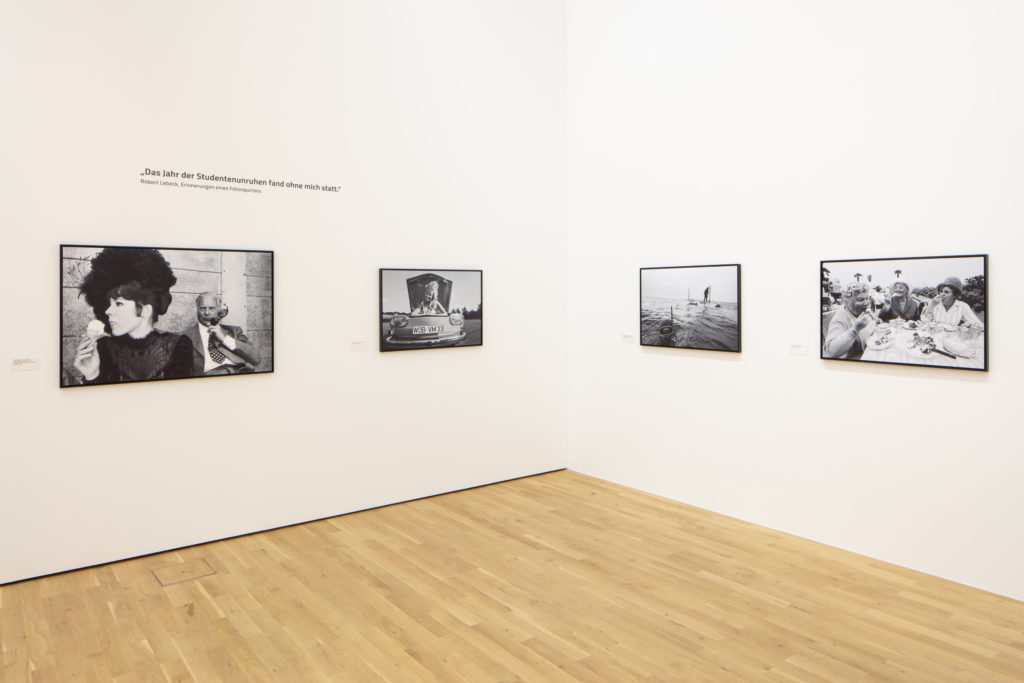
Photo: Marek Kruszewski
Architecture
The Kunstmuseum Wolfsburg was built from 1992 to 1994 by the Hamburg architectural firm of Peter Schweger and Partners as a transparent urban loggia. With its extensive overarching glass roof the building marks the south entrance to the town center in the direction of Hollerplatz. The solitary structure stands architectonically in the tension field between Hans Scharoun’s theater structure and Alvar Aalto’s cultural center both key architectures in Wolfsburg.
The center of the museum is the 16-meter high exhibition hall with a quadratic ground plan measuring 40 meters on each side. The impact of the exhibitions benefits from the flexible possibilities available in the large space that allow for an individualized architecture to meet the specific needs of each show. The generous ground plan is particularly suitable for large-scale objects, environments, installations and media art. The hall is two-storied on three of its sides and enclosed by further exhibition spaces. The entire exhibition surface encompasses 3500 square meters. The two-storied studio that can be accessed separately from the upper floor serves as a flexible workshop and presentation area where the educational program and other events accompanying the exhibitions can be held.
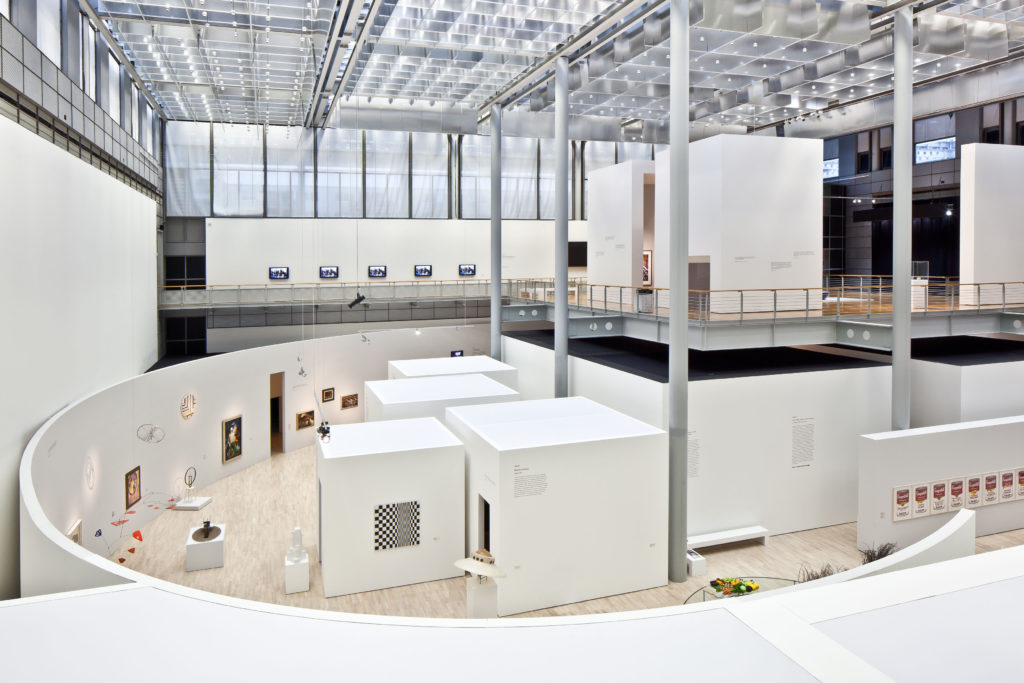
Photo: Marek Kruszewski
The Japan Garden
The Kunstmuseum Wolfsburg is probably the only museum in Europe with a Japan Garden. Originally conceived by the museum’s architect Peter Schweger, the 16 x 32 meter large sculpture court was opened in September 2007 as a place of tranquility and contemplation. The conception of a Zen garden is closely tied to the “Japan and the West: The Filled Void” exhibition that was shown the same year. Inspired by the museum’s transparent technoid appearance that was conceived as an urban villa, the Japan Garden represents a peaceful oasis in the middle of the industrial city of Wolfsburg.
Prof. Dipl.-Ing. Kazuhisa Kawamura from the Fachhochschule Mainz was the partner architect involved in the planning of the Japan Garden. Kawamura has been active in Germany since 1973. Aside from his professorship for representational geometry, the foundations of design and architectural theory he works as a freelance architect in Cologne. Roofed and furnished with benches, the Japan Garden offers the visitor the chance to unwind and slow down. Looking out across the pebbled area one’s glance meets a wall that lends the garden a sculptural quality on account of its composition and color as well as through its interaction with two other smaller wall slabs. According to the Japanese way of thinking, it is not contradictory to enclose nature in the form of a garden with hedges, walls and buildings but rather a sign of the Japanese sense of beauty. The deliberate combination of planned rationality and random naturalness is characteristic of a Japanese garden. Only when it is bordered like a painting in a frame is the garden recognized as such and appreciated.
Elements of Zen gardens are integrated into the large pebbled area that symbolizes water. The stones and plants were chosen in accordance with their climatic suitability; Japanese bamboos were thus planted alongside local juniper bushes and a maple tree that will develop into a bonsai through continual professional trimming.
Ideally, the garden and the museum are not to be seen as separate architectonic works but rather as parts of a single overall concept. Both environments seemingly flow naturally into each other, creating a symbiosis. The Japan Garden in the Kunstmuseum Wolfsburg is accessible to museum visitors during the museum’s usual opening hours (through the east cabinet to the rear of the large exhibition hall).
The realization of the garden was generously supported by Pon Holdings B.V., Nijkerk, The Netherlands.
Currently, the Japangarten is unfortunately still closed. Status July 2023.
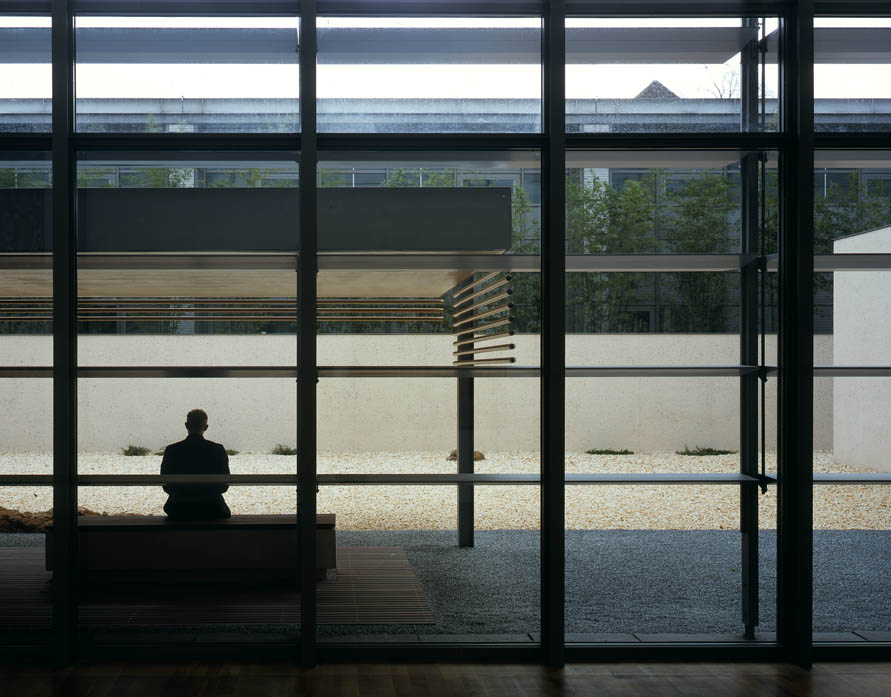
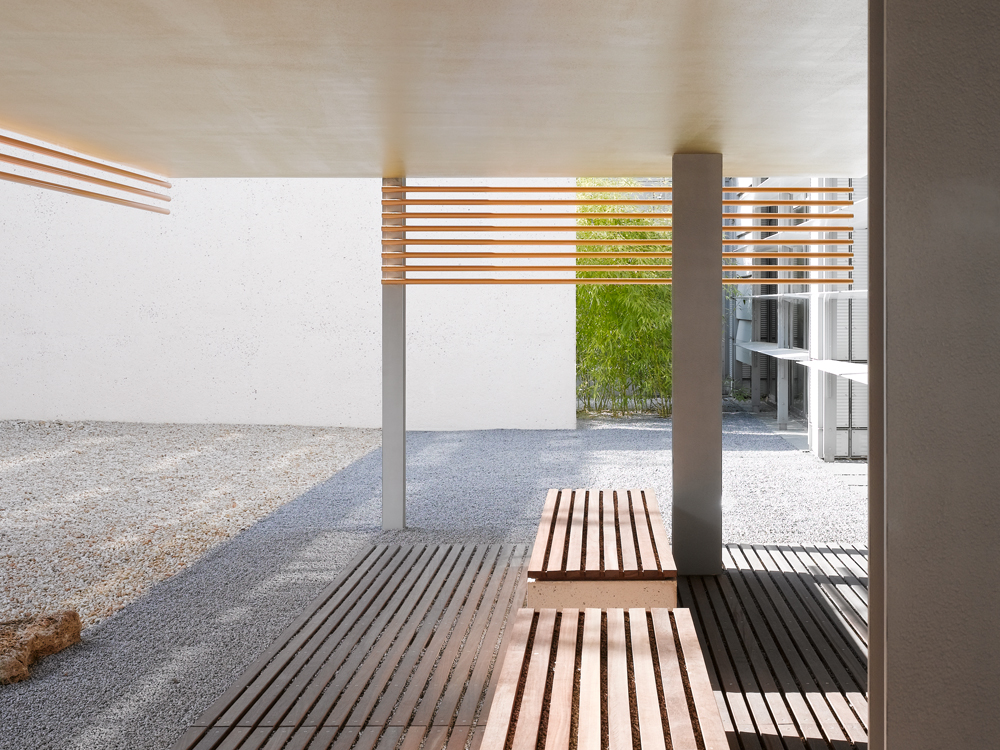
Photo: Marek Kruszewski